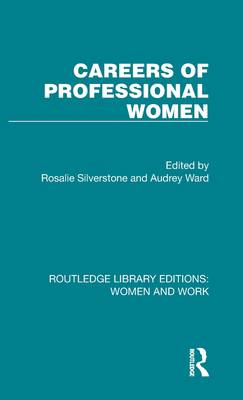
- Retrait gratuit dans votre magasin Club
- 7.000.000 titres dans notre catalogue
- Payer en toute sécurité
- Toujours un magasin près de chez vous
- Retrait gratuit dans votre magasin Club
- 7.000.0000 titres dans notre catalogue
- Payer en toute sécurité
- Toujours un magasin près de chez vous
Careers of Professional Women
Description
Originally published in 1980, women in the United Kingdom exhibited a pattern of work which was notably different from that in other countries of the EEC at the time. Its distinguishing feature was the high proportion of women who returned to work by the time they were forty years of age, having temporarily retired to care for young families. Although this pattern was of fairly recent origin, it was thought likely to be sustained.
Women's current life pattern was typically: school - training - work - withdrawal - retirement. Despite the existence of this pattern, agencies responsible for education, training and employment failed to recognise it as normal, often treating women as special cases. Thus there was a lack of flexibility in employment and insufficient retraining or part-time work. The problem was important both for qualified women who had made a considerable personal investment in a career, and for the nation in terms of effective manpower utilisation.
The skills required in many occupations traditionally entered by women are either learnt on the job or by means of relatively short formal training courses. This book, however, examines in some depth seven careers which require a minimum of three years' training. After a foreword by Baroness Nancy Seear and a chapter which introduces the concept of the 'bimodal' career and the consequent problems of withdrawal and re-entry, each chapter is written by an author who has conducted original research into the occupation under discussion, and specifically into women's personal experiences in that particular calling. A concluding chapter considers the implications of the findings both for the individuals concerned and for social policy.
Spécifications
Parties prenantes
- Editeur:
Contenu
- Nombre de pages :
- 226
- Langue:
- Anglais
- Collection :
Caractéristiques
- EAN:
- 9781032300382
- Date de parution :
- 24-08-22
- Format:
- Livre relié
- Format numérique:
- Genaaid
- Dimensions :
- 140 mm x 216 mm
- Poids :
- 412 g






